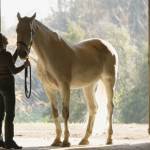Disease Transmission and the Horse-Human Bond

Many infectious diseases can spread between horses and humans, putting both species at risk.
“Infections that can be spread between animals and humans are referred to as zoonotic diseases,” said Laura Petroski-Rose, B.V.M.S., staff veterinarian for Kentucky Equine Research. “Some of the most common include viral diseases, such as the Eastern equine encephalomyelitis virus, known as EEE, that affects approximately 100-250 horses each year in the United States.”
While it would be futile to tell horse enthusiasts to steer clear of their passion, it behooves them to understand the risks, however slight, associated with horse ownership.
“This includes viruses spread directly from horses to humans such as rabies, viruses spread through mosquito transmission like the EEE virus, and even those spread via inanimate objects following aerosolization,” explained Petroski-Rose.
According to a recent review on zoonotic diseases**:
- Just over 1,400 disease-causing organisms, or pathogens, can affect humans. Of those, 58% originate from animals, including horses.
- The West Nile and Hendra viruses serve as excellent examples of zoonotic diseases that have “threatened health and economies around the world.”
- Even viruses thought to be highly species-specific, such as equine influenza H3N8 viruses, occasionally infect humans in addition to horses.
- Increased movement of horses for trade, sport, and breeding may introduce diseases to new territories and human populations.
“Practicing personal hygiene, following standard biosecurity protocols, embracing current infection control strategies, minimizing risk factors for disease transmission, and vaccinating horses appropriately all help minimize the risk of disease transmission between horses and humans,” advised Petroski-Rose.
In addition, maximizing a horse’s overall health, which includes ensuring adequate nutrition, will support immunity.
“Studies support supplementation with omega-3 fatty acids such as Kentucky Equine Research’s EO-3 and maintaining horses on appropriately fortified feeds like KER Brand Alliance Partner products, for maximal response to vaccination,” Petroski-Rose shared.
*Payne, E., J. DeAraugo, P. Bennett, et al. 2016. Exploring the existence and potential underpinnings of dog-human and horse-human attachment bonds. Behavioural Processes. 125:114-21.
**Kumar, B., A. Manuja, B.R. Gulati, et al. 2018. Zoonotic viral diseases of equines and their impact on human and animal health. Open Virology Journal. 12:80-98.








